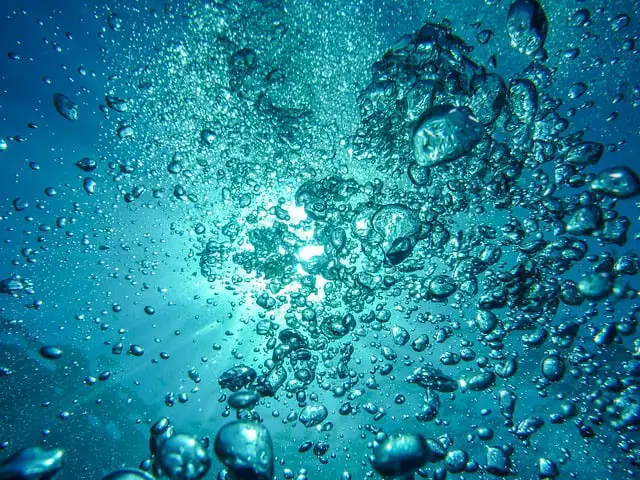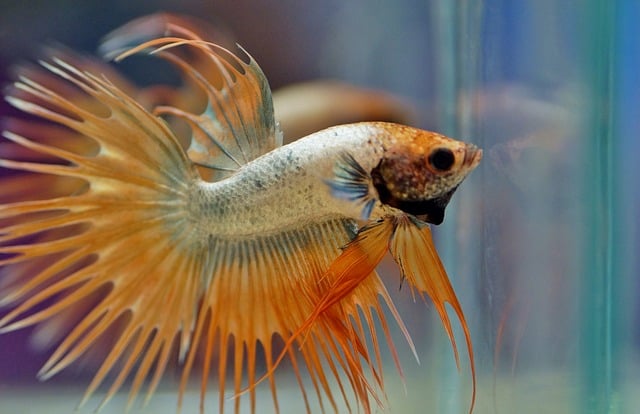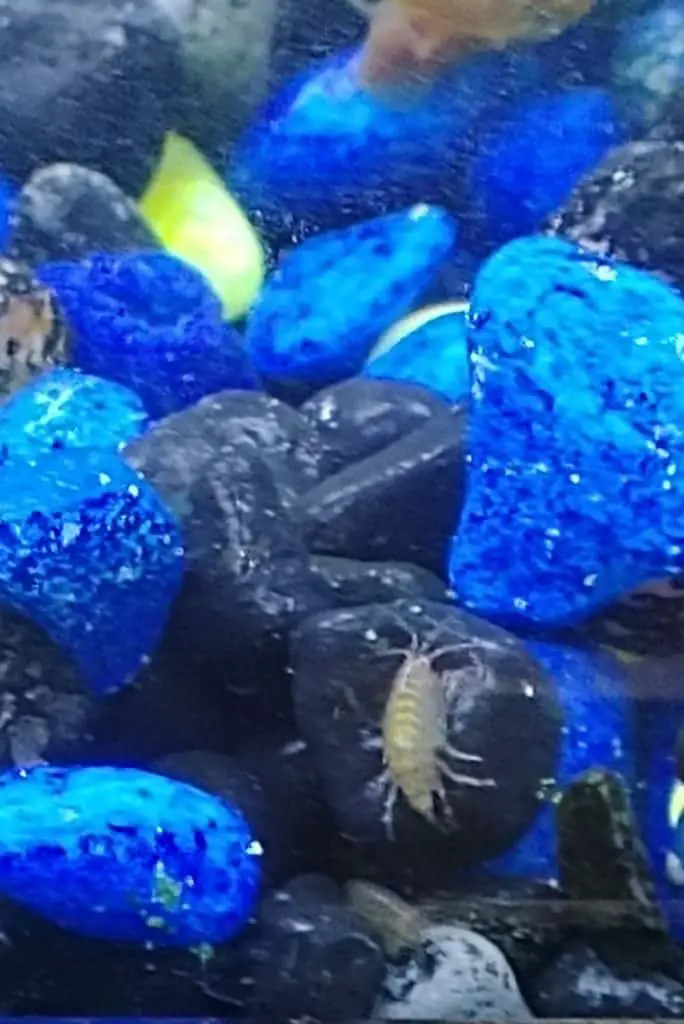A fish’s internal health can often be determined by its outward appearance and behavior. If its sluggish and losing its color or its skin/scales are deteriorating – becoming pale, turning white, and peeling off – then chances are your fish is sick or stressed. What causes this, you may ask? Well, I have the answer for you below:
If your fish’s skin appears to be peeling, the likely culprit is a bacterial infection brought on by poor water conditions including high ammonia levels, low oxygen amounts, and changes in temperature. Another possible reason could be a parasitic infection or skin flukes. Attacks or bullying by other fish could also be the cause.
Now that you know the different reasons why your fish’s skin is peeling off, let’s explore this topic in more detail. Together we’ll discover how to remedy each potential problem, why keeping your fish tank clean is so important, and how to maintain a safe aquatic environment for all tank inhabitants. We’ll also learn the significance of a healthy slime coating for fish and how to restore it once it’s been damaged.
If you’re ready to learn all you need to know about this problem and how to remedy it, then let’s begin!
Why does My Fish Look Like It’s Deteriorating?
There are different reasons why your fish’s skin may look like it’s deteriorating. If your pet is living in a ‘dirty’ or toxic tank with poor water conditions, then that could be the cause. Another reason might be a bacterial infection caused by a parasite or skin fluke. Stress from bullying or attacks by other tankmates is yet another possibility.
Deteriorating fish gills can appear to look paler than usual. Peeling scales, white spots, and/or skin lesions may also be apparent. When you notice your fish’s coloration is ‘off’ and it appears lethargic, refuses to eat, swims erratically, hides often, lays motionless on the substrate or floats lifelessly near the top, then it’s time to spring in to action!
Why is My Fish Losing Its Slime Coating?
Fish will sometimes lose their slime coating (the glycoprotein that coats the skin to protect it from bacteria, parasites, and pollution) when they’re sick or stressed. Poor water conditions are typically the cause – too much ammonia, not enough oxygen and inaccurate temperature or pH level will weaken this protective layer and leave the fish vulnerable to disease.
How do You Restore a Fish’s Slime Coating?
If your fish’s skin is peeling or it appears paler/whiter than normal, it could be the result of a weakened slime coating. To restore this natural, protective skin barrier (which is key to preventing disease and/or untimely death), begin by removing the sick fish from the community tank and placing it in a quarantine tank with the correct water parameters.
While in quarantine, feed the fish a high-quality diet supplemented with a multi-vitamin such as Nourish. As well, treat it with anti-bacterial agent like Formalin or Melafix and add a water conditioning agent like AquaPlus or StressGuard.
This will aid in recovery by helping the coat slime to heal itself. Keep the fish quarantined until you notice its color returning and its vitality restored.
Do Scales on Fish Grow Back?
Scales on a fish will typically grow back – provided the disease causing it hasn’t progressed too far. How long it takes is dependent upon the breed of fish and at what stage you begin treating it. If the damage isn’t too severe, you can expect the healing process to take anywhere from two weeks to two months. The better the quality of water (and the subsequent care provided), the faster your fish should recover.
How do You Know if You have Parasites in Your Fish Tank?
Outward signs of fish illness such as peeling skin, change (loss) of coloration, and red, black, or white spots are all signs that you likely have parasites in your aquarium. These physical indicators accompanied by other symptoms such as lethargy, loss of appetite, hiding, laying on the substrate, and/or floating near the surface all point to a parasitic infection which must be treated immediately.
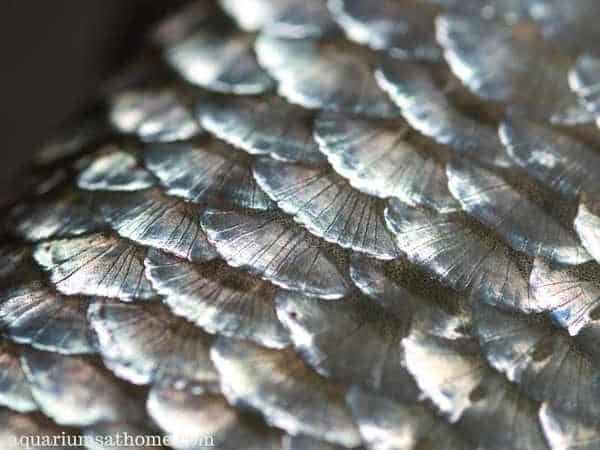
How to Get Rid of Parasites in a Fish Tank?
The quickest and safe way to get rid of ich parasites in a fish tank is to first, remove the ailing fish. Then, do a ‘deep’ water change by removing at least 50% of the liquid and replacing it with clean, treated water of the appropriate temperature. Next, test the water to see that the pH level is accurate. Once your sick has recovered from treatment, return it to the community tank.
Note: anytime you do a water change, even it’s it a small one like 10% or 15%, always treat the replacement water with a water conditioner such as Seachem Prime or API Water Conditioner to neutralize chlorine and reduce ammonia before adding it to the aquarium. You can purchase these products at your local fish store or online through Amazon.
Can Fish Recover from Parasites?
Aquarium fish can recover from a parasitic infection (such as ich) provided the ailment is caught in the early stages. Those with a healthy immune system and their slime coat intact can typically cope with common parasites. However, the ones that are stressed out from living in too small of a tank with poor water conditions and aggressive tankmates won’t be able to fight off an infection without intervention.
Keeping your aquarium clean is of the utmost importance regarding fish health. Regular water testing and bi-weekly partial water changes are a must. The cleaner the tank, the less likely for parasites to take over and infect your fish. Slowly increasing the temperature of the tank to 85-degrees Fahrenheit and leaving it there for a couple of days can also help kill ich parasites yet is typically tolerable by most fish.
How do You Know if Your Fish have Skin Flukes?
Skin or gill flukes are common parasites that an affect aquarium fish. The telltale signs of this parasitic infection include clamped fins, increased mucus buildup on the body, difficulty breathing, lethargy, and loss of appetite. Peeling skin and missing scales are also prevalent. You’ll likely notice many scales laying along the bottom of the tank due to intense bouts of flashing (rubbing against hard surfaces).
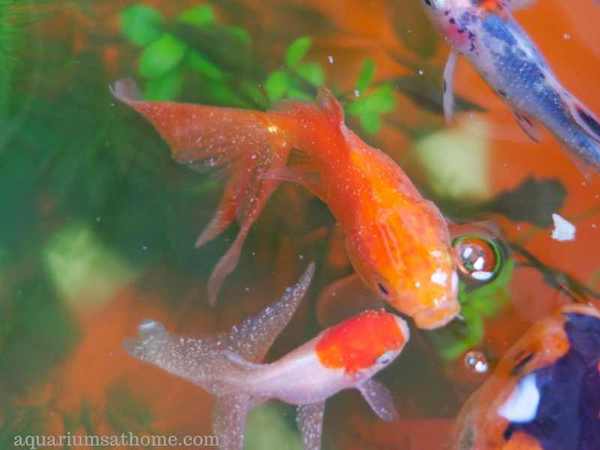
How do You Treat Skin Flukes in Fish?
To effectively treat skin flukes in fish, start by isolating the sick fish in a quarantine tank with clean, pre-treated water. Gradually reducing the heat in the community tank to 55-degrees Fahrenheit and leaving it there for a few days is recommended. This type of parasite thrives in warmer water and can reproduce at a rapid rate at higher temperatures. Cooler conditions force the parasite to become dormant.
Regarding the quarantined fish, start treating/medicating it with praziquantel or mebendazole (follow the instructions provided) and avoid feeding it or changing the water for 3 or 4 days. Offer food to the sick fish on day 5 but do so sparingly. The idea is not to contaminate the quarantine tank with leftover food and waste material – both of which elevate toxic ammonia in the water.
Final Thoughts
To sum things up, if your fish’s skin appears to be peeling, it’s likely due to a bacterial infection caused by high toxicity and/or inadequate water parameters. A parasitic infection such as a skin fluke could be another reason. Attacks from other fish might be a possibility as well. Full recovery is dependent upon determining the correct culprit and treating it both promptly and properly.
I hope this article has been of help to you. Thanks for reading and good luck with your aquarist hobby!
Recommended Posts
How To Easily Setup a Freshwater Aquarium Quarantine Tank
What Causes Clamped Fins in Fish?
How to Get Rid of a Dead Fish? (Do it Right)
Can a Fish Actually Drown in Water?




